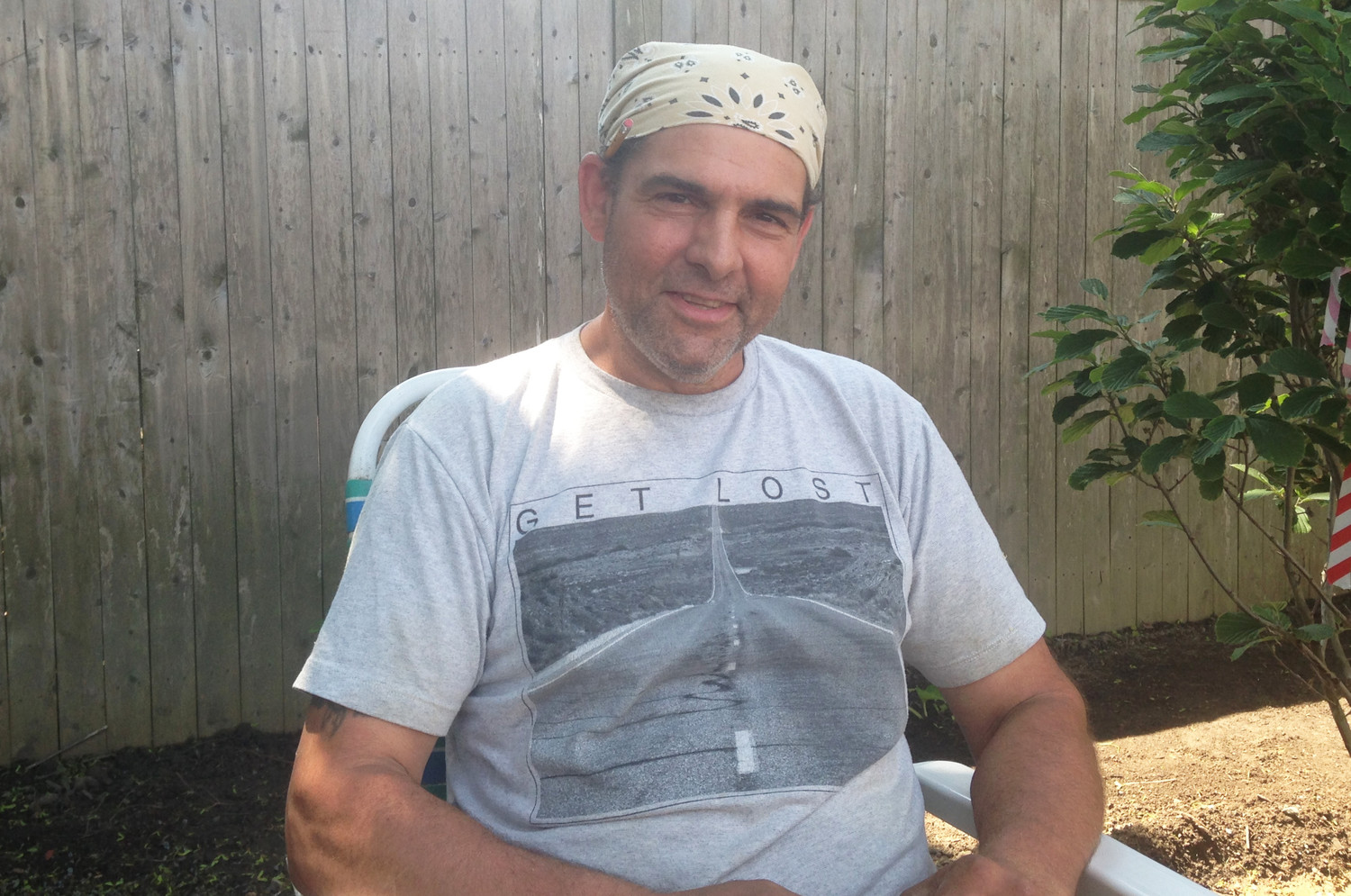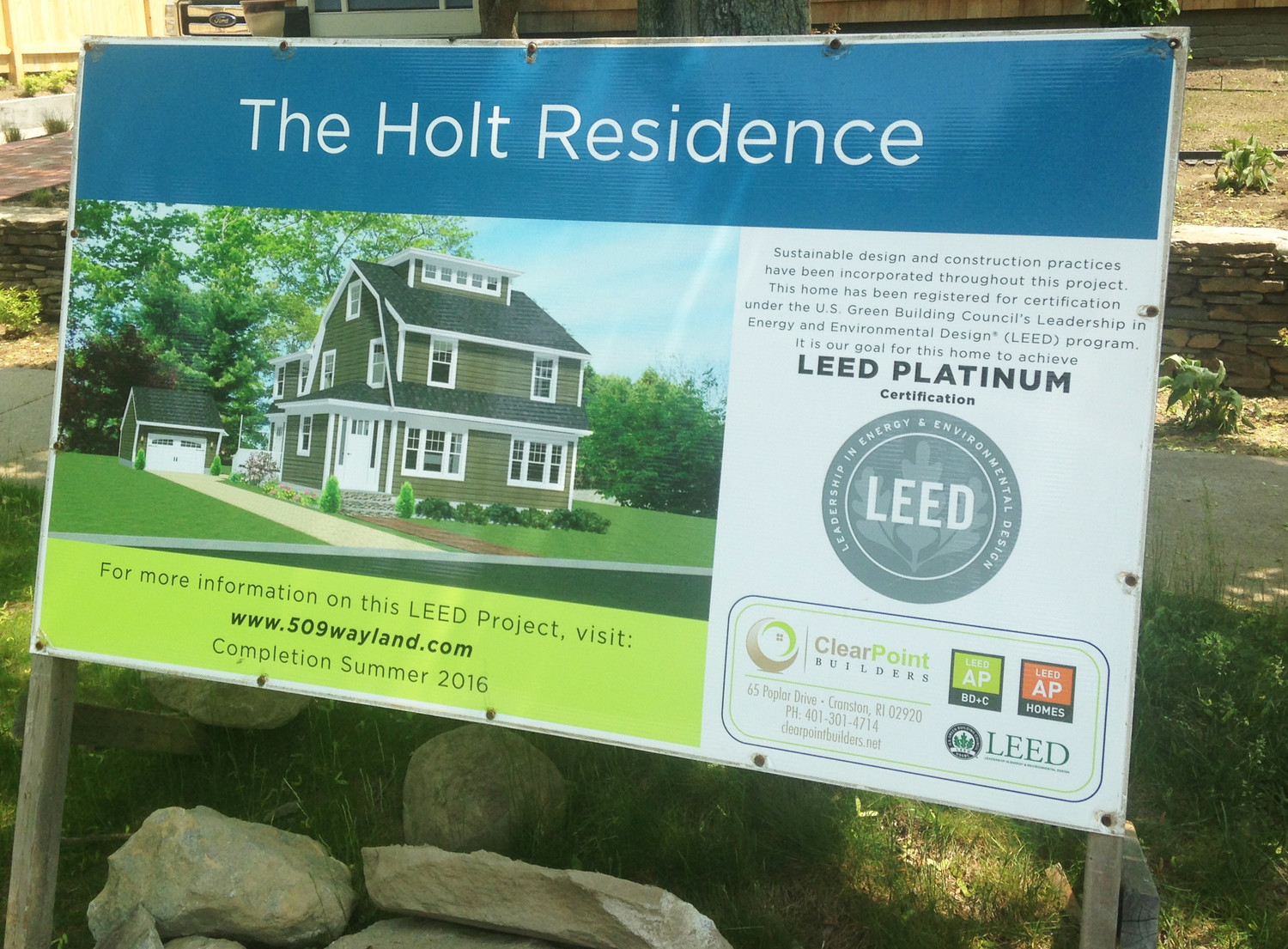Building sustainability, one house at a time
The reconstruction of a 110-year-old East Side home to meet LEED Platinum certificate standards is the first of its kind
PROVIDENCE – From the outside, the house resembles many of the other historic homes in the East Side neighborhood. But the Dutch Colonial home at 509 Wayland Avenue, built in 1909, is different: it is the oldest home in Rhode Island to seek LEED Platinum certification.
The Holt residence is a partnership between the owner, Felice Holt, and the builder, Richard Rodi, and president of ClearPoint Builders, Inc., of Cranston.
“We registered the project with LEED in June of 2015, with no time constraints,” Rodi explained, beginning “an adventure in the rebuilding of a 110-year-old home to create the most energy efficient, healthy, environmentally-friendly, high-performance home on the East Side, which was obviously the big challenge.”
LEED certification, a globally recognized symbol of sustainability achievement in building, is a program of the U.S. Green Building Council. It includes a set of rating systems for the design, construction, operation and maintenance of sustainable buildings and homes.
Rodi is one of some 170,000 LEED practitioners worldwide. His work on the home at 509 Wayland Avenue required the entire existing structure to be gutted down to its core, and then rebuilt using the most sustainable systems, repurposing original materials when possible, and designing what Rodi called a synergistic approach to sustainability.
Everything that has been designed and built as part of the process has been to done to enhance the sustainability and health of the living environment – from the red cedar wood shingles without preservatives to the absence of what’s known as volatile organic compounds, or VOCs, in any of the adhesives, paints, primers, sealants, floor finishes and glues, from the innovative design of a heat recapture system of shower water used to preheat water coming in from the street to the design of a rainwater capture system to use for irrigation purposes.
“I put smiles on people’s faces all the time,” Rodi told ConvergenceRI in a recent interview. “They know what they are getting. There is nothing hidden. It is healthy.
It is also, for Rodi, about creating a healthy work environment. “I love doing what I do; it is creating a very, very healthy work environment, as opposed to your average traditional home. I tell people, comparing working on a traditional home to a LEED home, one is a gas chamber, the other is a grassy meadow that is very healthy for you.
Here is the ConvergenceRI interview with builder Richard Rodi, on the day before the first weekend tours of the Holt residence were to take place, as part of the LEED certification process. [The home will be open each Saturday and Sunday from 10 a.m. thorugh 2 p.m. through Jun e 17 for educational tours]
ConvergenceRI: Here you are, on the East Side of Providence, seeking LEED Platinum certification for what would be the oldest house rebuilt in Rhode Island. Is this a growing opportunity?
RODI: Yes, this is a growing opportunity. The fact that it’s the first 100-year-old house in Rhode Island [seeking LEED Platinum certification], I am making a statement: this can be done.
You cannot retrofit LEED into an existing home; you have to do a full gut rehab, which, in an existing house, means going right down to the studs, so you can start fresh.
ConvergenceRI: You gutted the entire house?
RODI: We completely gutted this house, right down to the bones. And, we kept all of the bones; we may not have used them for their original purpose, but whenever possible, we repurposed them.
ConvergenceRI: In terms of the stick frame, what kind of wood did they use 100 years ago?
RODI: They used true two by fours, which were actually two inches by four inches.
ConvergenceRI: What were they made out of?
RODI: They were made out of fir, really heavy-duty stuff. The timber back then Is not like the new growth timber of today, which is, on average, only about 10 years old.
A lot of people don’t realize that the guts of most houses are only 10 years old, as far as the bones.
ConvergenceRI: I lived in a house in Western Massachusetts that I eventually bought that had been built in 1900 by the Montague Boot and Shoe Company for its employees. The cheapest wood at the time was chestnut; because of the blight, they had cut down all the trees.
All of the two by fours were chestnut; I went through four drills trying to replace the original horsehair plaster on the ceilings, because the chestnut was so hard.
RODI: I didn’t run into anything like that here; if I had, I would have tried to leave some of it exposed. Pretty much, the house was built in 1907, using standard balloon framing.
It was built in the Dutch Colonial style. We wanted to stay true to the neighborhood, the street, and the plat; to stay true to the character of the home, and not deviate from that whatsoever.
There is an addition on the house [that we built], but the average person wouldn’t know where the addition begins or even that there is an addition on the house.
ConvergenceRI: What did you use for siding on the house?
RODI: Western red cedar wood shingles. Left natural.
We have attacked, as far as the credit categories for LEED, every single credit. No VOCs, no chemical compounds whatsoever have been introduced in the reconstruction of this house, whether it be adhesives, paints, primers, sealants, floor finishes, glues, even the glues for appliances.
Platinum is a challenge; it is not easy. So, it is really the homeowner that decides about what kinds of systems they want to include and introduce into their homes.
ConvergenceRI: Any solar panels?
RODI: No photovoltaics. We needed a southwestern exposure that we didn’t have.
ConvergenceRI: How about a rain barrel system?
RODI: Yes, we do have that, we have a rain cistern that collects all the rain from the roof into down spouts that go into a cistern in the ground, and that serves as the irrigation for the property. It’s only 700 gallons, but it is more than adequate for irrigation purposes.
We have 100 percent drought-tolerant plantings. They just need water to get established for the first couple of months, then they’re on their own, they don’t really need irrigation.
[The rainwater in the cistern] could also be used for the interior, if they choose. We have a system downstairs that is a multi-micron filter system; the water surpasses the water quality of Providence water, which is probably the best in Rhode Island.
ConvergenceRI: Did you also change the pipe connections from the water system to the home, replacing any lead?
RODI: Yes, the lead pipes are completely gone, even from the street; we wanted that completely removed.
When it came to putting a new service [connection], I said rip it out, get rid of the lead. Even though [the water department] argued with me, saying that it had no harmful effects whatsoever. [laughter]
Meanwhile, we have an epidemic of childhood lead poisoning. Which side on they on? The lead is going to go into the water your drink and bathe in.
ConvergenceRI: Building in a sustainable fashion is more demanding. Is it also more satisfying?
RODI: I started building a little more than 30 years ago. I always knew that there was a better, more sustainable way to build.
Then, there were not really any sustainable products. Once in a while, you’d see something that had the word “green” on it, which for me, green is an overused marketing word.
LEED came about in 1993, but it really wasn’t promoted as strongly as it is now. Some 25 years later, people like myself, there’s 170,000 of us worldwide. We’re still a very small club, but we’re making a huge difference in the world of building.







